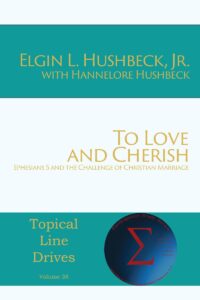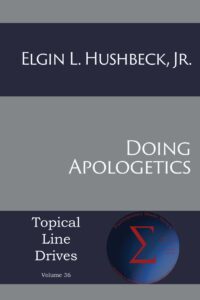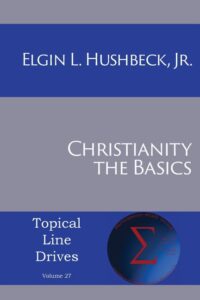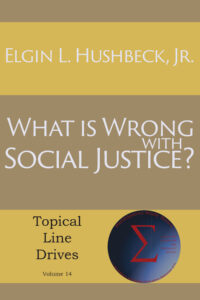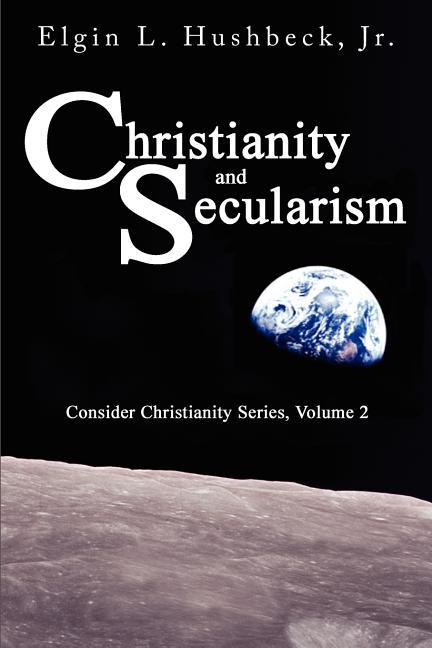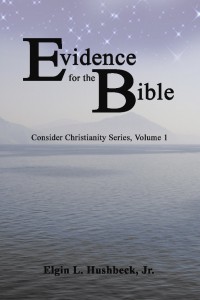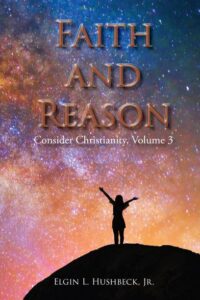Week Seven: Oct 23, 2011
While this class follows the text very closely, there is no preset schedule, nor any particular number of verses that we need to cover each week. Instead I encourage discussion and leave room for the Holy Spirit to take the class, where He needs to take it. This was one of those week, were most of the class was taken up in the discussion and questions. As a result we only covered one verse. I will try to summarize at least the main points that were discussed in the question section below.
Study
I. Opening
b. Greeting(3)
3 – Grace, mercy, and peace will be with us from God the Father and from Jesus1 the Messiah,2 the Father’s Son, in truth and love.
– Ancient letters followed the standard opening with a greeting, an example of which can be seen in Acts 15:23.
From: The apostles and the elders, your brothers
To: Their gentile brothers in Antioch, Syria, and Cilicia.
Greetings.
Paul’s letters show an expansion of the standard greeting with Christian elements in awordplay with the word Greeting (χαίρειν/chairein) changing it to Grace (χάρις/charis) and often adding peace, the standard Jewish greeting. Thus in 1 Cor 1:3,
May grace and peace from God our Father and the Lord Jesus, the Messiah, be yours!
This came to be a common patter among Christian letters and one that John follows here.
Grace, mercy and peace
– Grace and peace were common among Paul’s letters and to this John adds mercy.
– A member of the class mentioned that there was a progression in this verse, and there is a definite progression. Working backwards, you cannot have true peace apart from God. But sin keeps us from God, and it is God’s mercy that allows us to be reconciled with him, and this mercy in grounded in grace.
will be with us from God the Father and from Jesus
– This is an affirmation, not a request. Note that John is making it clear that the source of our grace, mercy and peace are both the Father and Jesus.
– This will be important has the letter develops, for the denial of Jesus as the Messiah forms a key part of the false teachings this letter warns against.
the Father’s Son
– Jesus is further described as the Father’s Son. This repletion is a form of emphasis that Jesus is the son. Again this was something the traveling missionaries discussed in this letter rejected.
in truth and love.
– John again comes back to truth adding love. This stresses their importance in grace, mercy and peace, without truth or love, there can be no grace, mercy or peace. This is why truth and love will play such large role in the rest of the letter. So John is not just greeting his readers, he is using the opening of this letter to prepare his readers for what follows.
Question/Discussion:
As mention above the question and discussion took up the majority of the class, and my memory is not sufficient to have captured it all. So you see there is a reason to come to the class and not just follow it online! But I will do my best.
The discussion started with the theme of the class, living in truth and love. These are both very important concepts, but they are often at odds with each other. In addition, truth, itself is a very challenging concept. This was brought home to me in the very first week of this current class. Highland Community Church has a winter and summer schedule and does not have classes during the summer. So when our class started up again, not too surprisingly, one of the members who has been in the class for several years asked me, how was my summer?
My first reaction was to say the standard, “fine,” but I realized this was not true. For reason that are not important here, it had been a difficult summer with virtually no free time to actually enjoy it. Here I was, about to start teaching on truth and love, and before class even started I was about to say something that was not true. So I was honest, it had been a difficult summer.
This started a discussion among the class as to what and how much to say, and how you can answer truthfully, without going into long and possibly unwanted explanations. But before long, the discussion broadened onto how we are not always truthful with ourselves. Just as we tell others that we are Ok, or that everything is fine, we say the same things to ourselves. We are fine; no problems with God; I have my life in order. Yet if we were to ask God, would he say the same thing?
Before I had started this study, I thought I was doing pretty well on the truth front, and in a general sense this was probably true. But it did not mean that I was up to God’s standards, or even that I viewed truth, or its importance, in quite the same way that He does.
Jesus is the truth in every sense of that word. A commitment to Him is a commitment to truth, a key component of which is being honest with, and about, ourselves. Letting God shine his light into our lives to reveal the things we need to work on.
A few weeks ago, we had some questions about Mormons and Jehovah’s Witnesses, and so after the discussion above, before going into 2 John, I updated the class on something that had happened during the week. My neighbor has had some Jehovah’s Witnesses coming over to his house, and so he stopped by to ask some questions about what they were claiming. One argument in particular stood out and I wanted to share it with the class.
A key difference between the historical Christian belief and the beliefs of the Jehovah’s Witnesses is over the deity of Jesus Christ. Christians have historically affirmed it, while Jehovah’s Witnesses deny it. A key verse in this debate is John 1:1.
In the beginning was the Word, and the Word was with God, and the word was God.
Verses 1:14, 15 and 30 clearly identify the Word in verse 1 as Jesus. So when it says “The Word was God,” it is not hard to see why historically Christians have believed that Jesus is God.
My neighbor said that in response to this passage, the Jehovah’s Witness had pulled out a Greek-English Interlinear and pointed out how the word translated God in the phase, “and the Word was with God” was different than the word translated God in the phrase “and the word was God.” My neighbor went on to explain that he had been told that the word ‘God’ in “the Word was with God”, refers to Jehovah, while ‘God’ in “the word was God” is not really god. Thus in the New World Bible, the Jehovah’s Witness’ translation, John 1:1 reads,
In [the] beginning the Word was, and the Word was with God, and the Word was a god. (NWT)
While this argument may sound good in English, it falls completely apart with even the most preliminary understanding of Greek.
Here is the Greek of John 1:1
Ἐν ἀρχῇ ἦν ὁ λόγος, καὶ ὁ λόγος ἦν πρὸς τὸν θεόν, καὶ θεὸς ἦν ὁ λόγος.
Or transliterated
En arche en o logos, kai o logos en pros ton theon, kai theos en o logos.
Or as a word for word literal translation
In beginning was the word, and the word was with the god, and god was the word.
From this we can see that it is true that two words translated “God” in this passage are spelled differently, the first one is θεόν (theon) and the other is θεὸς (theos). But the difference in spelling has nothing at all to do with the basic meaning of the word, but rather the grammar of the sentence. The spelling is different because Greek uses the ending of words to indicate their function. Consider the following sentence:
Bill threw the ball to Joe.
English uses word order to indicate function, so we know that Bill is the subject (i.e., Nominative Case) and Joe is the indirect object (i.e. Dative Case) by where they appear in the sentence. Greek however uses the ending of the word for this. One place were English also uses word endings, is with the possessive (i.e. Genitive case). Thus in the sentence
Joe threw Bill’s ball back.
The -’s ending is used to show that the ball belongs to Bill. English also uses the –s ending to show plural. So whereas English does this for the Genitive case and for plurals, Greek does this for all cases and for both singular and plural. It shows the Nominative singular (i.e, the subject) with the -oς ending and the Accusative singular (i.e. the object) with –oν. This the reason for the difference in spelling between θεόν (theon) and θεὸς (theos). The first is in the Accusative case, which is exactly what one would expect as it is the object of the phrase, and the second occurrence is in the Nominative case.
To see the fallacy of the Jehovah’s Witnesses’ argument consider again the two sentences about Bill and the ball.
Bill threw the ball to Joe.
Joe threw Bill’s ball back.
Bill is spelled differently in these two sentences. Does that mean that “Bill” in the first sentence is a different kind of Bill than “Bill’s” in the second sentence? Clearly not! Bill is the same in both sentences and the spelling difference merely concerns how it is being used in the sentence. The same is true for θεόν (theon) and θεὸς (theos) in John 1:1.
At this point a question was asked about the translation of “a god” found in the Jehovah’s Witnesses’ translation. First off, it is not impossible. Greek has no indefinite article (“a”) nor can one simply determine by the absence of the definite article (“the”) that a noun is indefinite. Normally, this must be determined by the context.
A key issue in John 1:1 is that in the phrase “The Word was God” (lit: God was the Word) both “God” and “Word” are in the nominative case. A rule in Greek, Colwell’s Rule, does help us determine that “Word” is the subject, which is why it is translated as “The Word was God,” and not “God was the Word” because in English the subject normal appears first. It also suggests that God is definite (“was God”) instead of indefinite (“was a god”). But it does to prove it. I will not go into the details of the grammar here. Those who are interested can find a more complete discussion of the grammar here.
In terms of the context, an extremely difficult problem arises with the translation of “a god” particularly in the way it is understood by the Jehovah’s Witnesses. If Jesus is “a god,” in what sense is he a god? If he really is “a god,” separate and distinct from the father, then you have the teaching of polytheism, the belief in more than one God. On the other hand, if you want hold on to monotheism, the belief in only one god, then John 1:1 cannot really be saying what it is saying.
Another point is that one of the ways Greek emphasizes something is by moving it to the front. (The other is, as we saw in the verse this week, by repetition) Remember, because of the word endings, word order is not needed to determine the function of the word. In Greek you can put the words pretty much where you want them. While “Bill’s Joe ball threw” does not make much sense in English, that word order would not be a problem in Greek as the word endings would make it clear that the meaning was “Joe threw Bill’s ball.” As mentioned above, the Greek literally reads “god was the word.” So not only is the word being equated with God, but the “God” part is being emphasized. Yet the Jehovah’s Witnesses’ understanding attempts to de-emphasize this out of existence. It is not “God” but just “a god,” and then it was not really even “a god,” but something lesser than that, because according to their belief Jesus is not god. In short it is pretty easy to see that their translation is trying to get around what the text says, because what it says does not match their beliefs.
From here the discussion turned to how average Christians can deal with such arguments. After all, few Christians know very much Greek, nor do they need to. God does not expect anyone to become a super-Christian, one who know all the answers and whose walk with God is perfect. This goes right back to the subject of this class. When dealing with questions, the simplest thing is to be honest. Answer those questions you know, and when you are not sure, or do not know the answer, or someone raises a point or objection you have never heard before, simply say “that is a good question, and I do not know the answer. Let me look into that and I will get back to you.”
Everyone has their role to play, and just as not everyone is called to be a pastor, not everyone is called to be an apologist. So while you may not know the answer, there is probably someone in your church who does, or at least who knows how to get the answer. Your pastor is a great place to start.
In many ways truth is liberating. It frees us to go wherever the truth leads us. We do not have to live in fear that what we believe will be proven wrong. If a Jehovah’s Witness or a Mormon showed me an error in my understanding of the Bible, I would praise God, because that would remove an error from my understanding and move me one step closer to the truth. Jesus is the way, the truth, and the life. Having said that, as with the example above, I have seen so much error and falsehood in their teachings that I know that they cannot represent the true teaching of the Bible, but I approach them in truth and in love seeking the leading of the Holy Spirit.
Next week we will start in 2 John 4
If you have question or comments about the class, feel free to send me an email at elgin@hushbeck.com and be sure to put “Epistles of John” in the header.
See here for references and more background on the class.
Scripture taken from the Holy Bible: International Standard Version®. Copyright © 1996-2008 by The ISV Foundation. ALL RIGHTS RESERVED INTERNATIONALLY. Used by permission. www.isv.org
Note: Some places I have modify the text from the ISV version. Passages that I have modified have been noted with and * by the verse number and the ISV text is included in a footnote.
Footnotes:
1 Other mss. read the Lord Jesus
2 Or Christ
